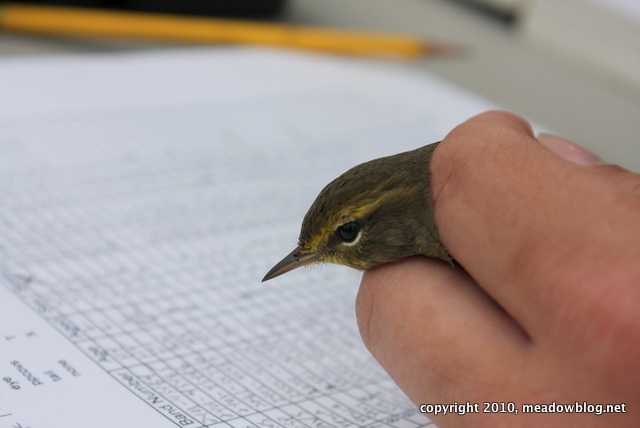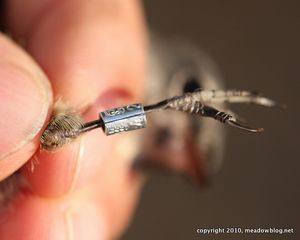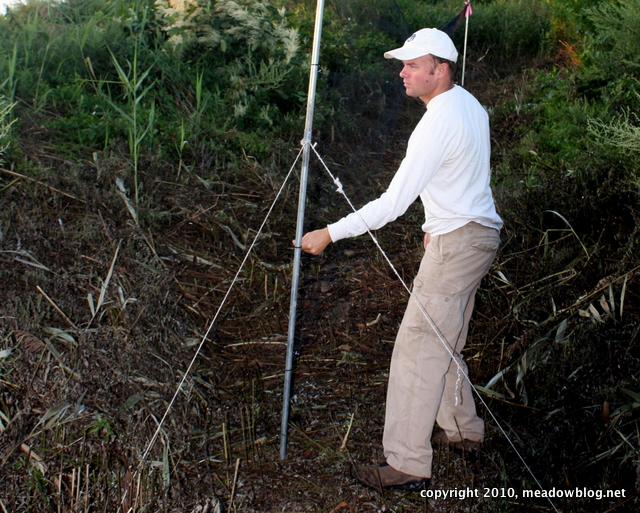
The NJMC's Jim Wright writes a nature column for The South Bergenite. Here's the latest column, published today:
It may be hard to believe, but the old landfills of the Meadowlands have become major rest stops for migratory birds.
 Mike Newhouse, an NJMC naturalist, has led a bird-banding project in North Arlington for three autumns and springs to see how these birds use the habitats that emerge on the inactive landfills.
Mike Newhouse, an NJMC naturalist, has led a bird-banding project in North Arlington for three autumns and springs to see how these birds use the habitats that emerge on the inactive landfills.
Using large stationary nets, Mike and his crew of volunteers briefly captured a total of 3,169 birds and 77 species over two months. They then gently weighed, measured and placed a tiny leg band on each bird before setting it free.
The most frequently banded bird: the Song Sparrow, at 484. The Yellow-rumped Warbler was close behind, at 465.
I caught up with Mike recently for an interview.
Full interview and photo of Mike at work follow.

What is the goal of the project?
This research will enable the Meadowlands Commission to help migratory songbirds by developing habitat plans for future landfill closures.
What have you learned so far?
We have found that a diverse landscape full of different grasses and wildflowers increases the abundance and diversity of birds.
Any surprises?
The biggest surprise is the number of birds that use a closed landfill covered in invasive plants. In three years, we have banded more than 11,000 birds.
Another surprise was banding five species for the first time during the project: Acadian Flycatcher, Scarlet Tanager, Great-crested Flycatcher, Purple Finch, and Clay-colored Sparrow.
What time did you start in the morning, and why?
We started at 6 a.m. because we needed to have the mist nets open before sunrise. Birds are most active in early morning, so we need to be ready when they are.
How many volunteers participated?
This season we had a great core of volunteers. The project wouldn’t have been as successful without them. In all, eight people volunteered, including two students from Ramapo College.
What are the future plans?
We hope to keep this project going next season. We are starting to study different variables, including the affects of vegetative structure, age of the birds, and potentially insect abundance in various habitats. Long-term studies like this are really beneficial not only to the Meadowlands, but for anyone looking into bird populations.
Grassland birds, in particular, are sensitive to environmental disturbance, and research such as this can help determine which species are in trouble before it is too late.
NJMC Communications Officer Jim Wright maintains the Commission’s daily nature blog, meadowblog.net – featuring beautiful photography and the latest info on the region’s natural wonders.
